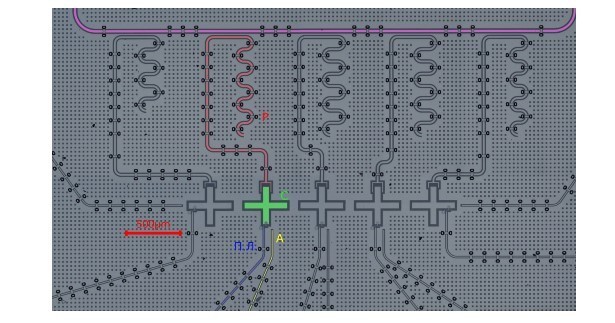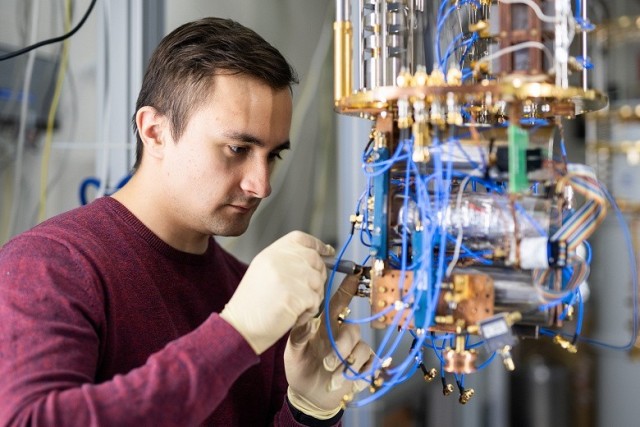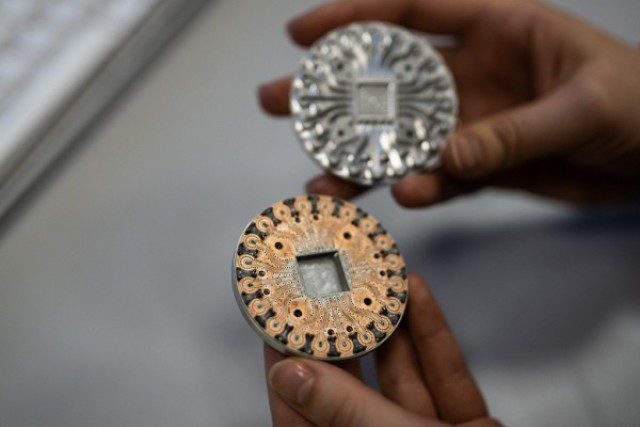A team of scientists from MIPT and NUST MISIS implemented a four-qubit quantum processor and demonstrated on it the accuracy of two-qubit CZ operations of more than 97%. The experiment was conducted at MIPT on November 8.
For this purpose, a superconducting integrated quantum chip was used, which was manufactured by employees of the Laboratory of Artificial Quantum Systems at MIPT.
The quantum integrated circuit (CIMC) contains five capacitively shunted charge qubits, one of which was not used in the experiment. Qubits are electrically connected to each other and can both exchange energy and controllably change each other's phase of superpositions of states |0⟩ and |1⟩. The first type of interaction is used in experiments on quantum machine learning, and the second is more convenient for standard quantum algorithms.
 |
| Photo of KIMS from an optical microscope (in false color). |
| Source: ixbt.com |
To implement non-destructive reading of qubits by means of individual microwave resonators, a broadband Josephson parametric amplifier was used, which was developed jointly by MIPT and NUST MISIS.
"For the first time in Russia, MISIS and MIPT University scientists have experimentally implemented algorithms for cross-entropy testing and quantum tomography of the process, which now allow evaluating the accuracy in principle of any one- and two—qubit valve operations on superconducting qubit systems," said Ilya Moskalenko, a researcher at the NUST MISIS Superconducting Metamaterials laboratory.

The next stage of the joint project will be the development and testing of 8-qubit simulators and processors.

